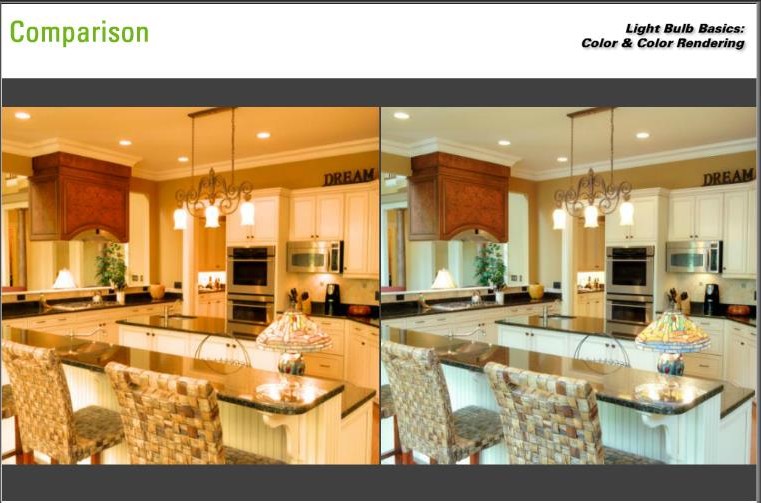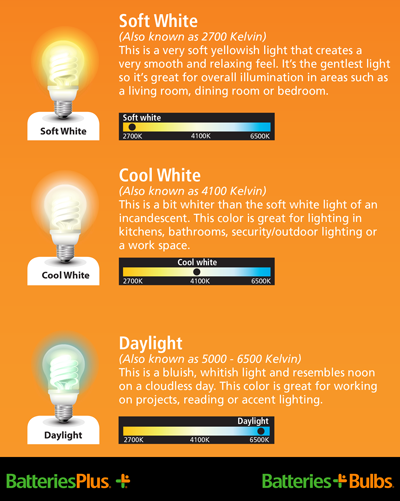Seeing Things In a Different Light
- by David Neubert - updated on 7/26/2017
Why Color Temperature Matters
Ever since Edison introduced the very first electric light bulb in 1879, we have seen everything in the same Soft White color temperature, measured at 2700K (Degrees Kelvin). The light created by these bulbs has been the standard for over 130 years, giving off a slightly yellow glow which creates a warm, cozy atmosphere.
While this is a great fit for bedrooms and living rooms, spaces like bathrooms, kitchens, basements, and garages have different lighting requirements. In these rooms it is better to have truer white lights that create a brighter feel better suited to activities like preparing food, applying makeup and performing auto repairs.
With the advanced technology of LEDs, light bulbs now come in a vast range of color temperatures, providing many options for you to choose from when lighting the rooms in your home.
The Range of Color Temperature
The three primary types of color temperature for light bulbs are: Soft White (2700K – 3000K), Bright White/Cool White (3500K – 4100K), and Daylight (5000K – 6500K).
The higher the Degrees Kelvin, the whiter the color temperature. Although whiter lights will appear "brighter" than those of a lower Kelvin reading, the number of lumens (measurement for brightness) will not change, since this is an effect of color temperature, not true brightness.

Although our eyes have become accustomed to the Soft White color temperature of incandescent bulbs over the years, this doesn't make them the best option for all lighting applications. For example, because of their warmer color temperature, these soft white lights often pull warmer colors from a room (reds, oranges, etc.), altering the contrasts throughout the space. With that in mind, here are some tips on how to light the different rooms in your home most effectively:
SOFT WHITE/WARM WHITE:
Best for living rooms, dining rooms and bedrooms; providing a traditional warm, cozy feel to them.
BRIGHT WHITE/COOL WHITE:
Best in bathrooms, kitchens, outdoors or for use as security lights; giving rooms a whiter, more energetic feel.
DAYLIGHT:
Best in office spaces, reading areas, workspaces/garages and manufacturing sites; good for reading, intricate projects, or applying makeup – provides the greatest contrast among colors.

CRI or Color Rendering Index
The CRI is the measure of the ability of a light source to reproduce colors of various objects compared to an ideal light source such as incandescent or natural light. The scale runs from 0-100, and those lights with a CRI closer to 100 have an ability to show truer colors across a wider spectrum.
CRI is an important consideration for some applications, but definitely not for all. For example, it's very important in a retail store to have lights with a high CRI, so that colors appear as they truly are. Whereas in a factory (CRIs often in the 70s or 80s) or with streetlamps (CRIs in the 30s or 40s), color accuracy isn't nearly as important as the overall amount of light produced or lamp cost.
Additional Lighting Information
Ultimately, how you light your home is up to you; these are just some tips. Now that there's a greater range of options to choose from, you can create the look and feel for every room in your house. Have fun with it and stop by a Batteries Plus today to learn more about lighting. Our trained associates will be happy to guide you through our extensive selection of energy-efficient LED bulbs! Or visit our Lighting Purchasing Guide online for answers to common lighting questions.